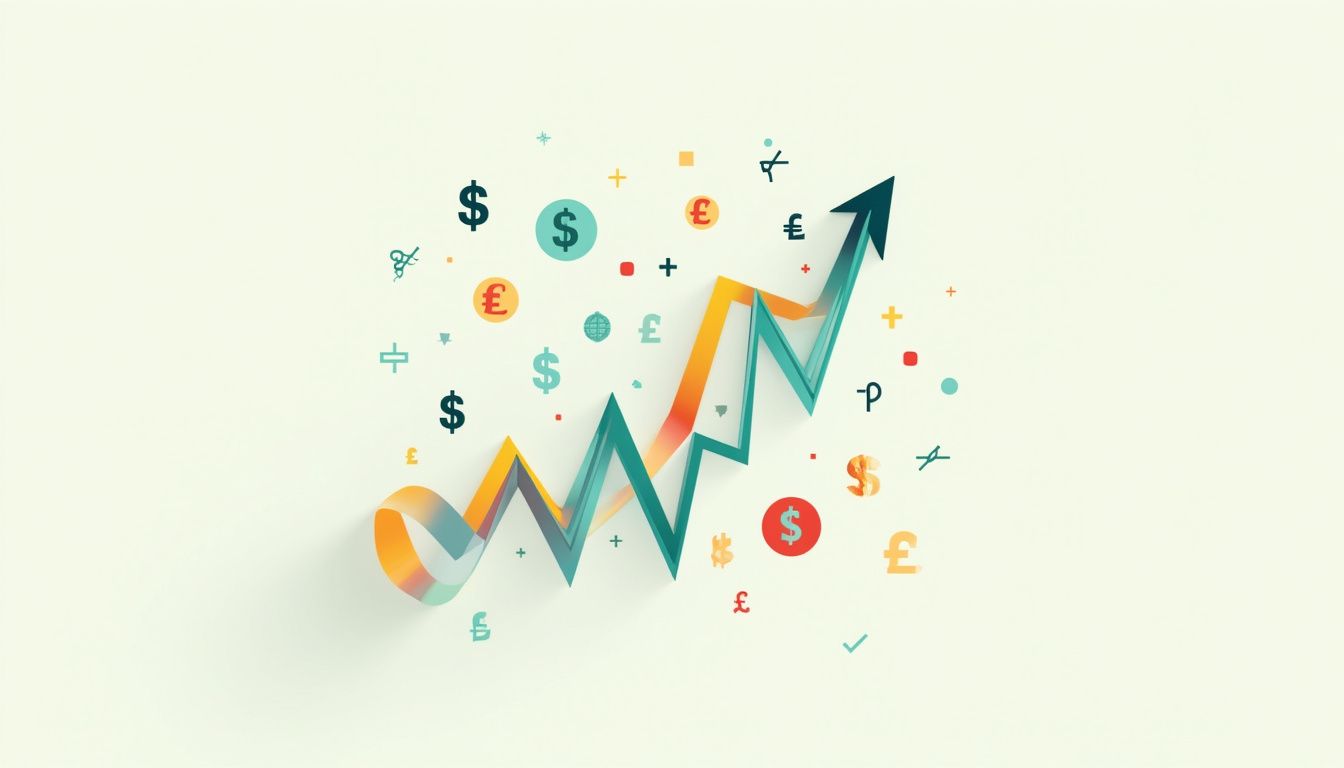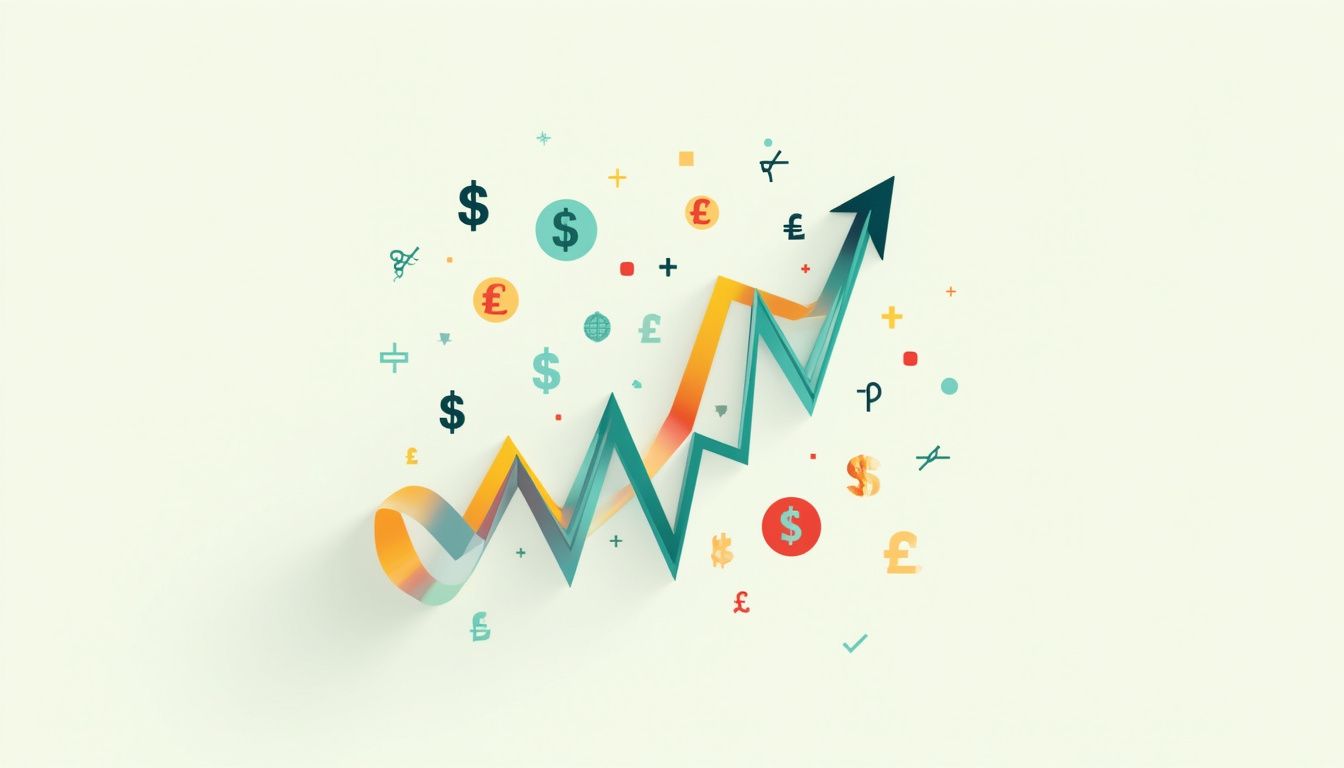

Struggling to understand what is equity in forex trading? Equity shows the real-time value of your trading account, including profits or losses from open positions. This blog helps you calculate and monitor equity while improving risk management in your trades.
Keep reading to protect your investments better!
 Equity in forex trading represents the total value of your trading account when including unrealised profits or losses from current trades. It is a dynamic figure that changes based on market movements and your open positions.
Equity in forex trading represents the total value of your trading account when including unrealised profits or losses from current trades. It is a dynamic figure that changes based on market movements and your open positions.
The formula to calculate equity is simple: **Equity = Account Balance + Floating Profit – Floating Loss**.
Your equity reflects both realised money and ongoing trade performance.
If you have no open trades, your equity matches your account balance. With active trades, it adjusts depending on whether profits or losses accumulate. For example, if your balance is £1,000 and an open position gains £200, equity becomes £1,200.
Understanding this ensures better financial control in the forex market.

Equity and balance play different roles in your trading account. Understanding their distinction helps you gauge real-time results and plan better strategies.
Equity and balance are fundamental terms in forex trading. They provide different insights into your trading account. While balance stays fixed until trades are closed or funds are added/withdrawn, equity is dynamic and changes with open trade performance. Below is a clear breakdown of their key differences:
| Aspect | Balance | Equity |
|---|---|---|
| Definition | The total funds in your account excluding open trades. | The real-time value of your account, including open trades. |
| Updates | Only changes when trades are closed or deposits/withdrawals are made. | Fluctuates constantly based on live market conditions. |
| Inclusion of Open Trades | Does not factor in profits or losses from active positions. | Accounts for unrealised profits or losses from open positions. |
| Usefulness | Helpful for knowing static funds but not ongoing account performance. | Crucial for tracking live performance and managing trades effectively. |
| Scenario Example | If you deposit £10,000 and open trades, your balance remains £10,000. | If those trades gain £500, your equity becomes £10,500. |
Understanding these distinctions helps you evaluate your trading account and assess live performance. Next, explore how equity is calculated in both simple and complex scenarios.
Equity reflects the current financial status of your trading account, including any floating profit or loss from open positions. Unlike balance, which shows completed transactions only, equity changes instantly with price fluctuations in open trades.
This makes it a real-time measure of performance on your trading platform.
Equity provides dynamic insights into whether your trades align with your investment objectives.
For example, if you have £5,000 in balance and an open position generating £500 in unrealised profit, your equity will display £5,500. Similarly, if the trade shifts to a £300 unrealised loss instead, equity would adjust to reflect £4,700.
This constant updating helps identify risks and manage margin requirements effectively.
Equity reflects the true value of your trading account, considering open positions. Learn to calculate it accurately to assess performance and manage risks effectively.
To calculate equity with no open trades, simply use your account balance. Since there are no active positions, there is no unrealised profit or loss affecting the calculation. For instance, if you have £10,000 in your trading account and all positions remain closed, both your balance and equity equal £10,000.
This equation keeps things straightforward: Equity = Account Balance ± Unrealised Profit/Loss. With zero trades running in the market, unrealised profits or losses don’t exist. Your trading platform should reflect this figure accurately under its trade tab for easy monitoring of performance within foreign exchange markets.
Equity in forex trading changes with open positions due to unrealised profit or loss. Tracking it helps you understand your account’s real-time performance.
Equity directly affects how much of your trading account remains usable for margin. It serves as a critical measure in managing risks while trading on leverage.
Your equity directly affects how much free margin is available in your trading account. If you experience a decrease in equity due to unrealised losses, your free margin also shrinks, limiting your ability to open or maintain positions.
For instance, with a £10,000 account balance and unrealised losses of £3,000 from open positions, your equity drops to £7,000. This lowers the amount of capital left for new trades.
Higher leverage amplifies this impact by increasing both potential profits and risks. Using 50:1 leverage on a trade worth £500,000 requires an initial margin deposit of just £10,000.
A sharp loss can erode equity quickly and lead to a lower margin level. If it falls too low compared to used margin requirements set by brokers, you may face a margin call or forced liquidation of positions.
Equity plays a critical role in protecting your trading account from margin calls. Monitoring it ensures you maintain enough funds to support open positions and manage risks effectively.
Tracking your equity helps you stay informed about the real-time health of your trading account. It allows you to spot potential risks early and make informed decisions in unpredictable currency markets.
Equity acts as a live measurement of your trading account’s health. Unlike the balance, which remains fixed until trades close, equity reflects real-time market fluctuations. For instance, with an account balance of £10,000 and unrealised losses of £5,000 from open positions in the forex market, your equity drops to £5,000.
Equity isn’t static; it tells you where your trading performance stands right now.
Failing to monitor equity can lead to severe outcomes like margin calls or forced trade closures. This makes it a critical tool for assessing risks and maintaining control over leveraged trades on any trading platform.
Failing to monitor equity in forex trading can quickly lead to severe outcomes. Unrealised losses on open positions reduce your free margin. This puts you at risk of receiving a margin call or even losing your entire trading account.
For example, if John starts with £10,000 and experiences an unrealised loss of £5,000, his broker may issue a margin call due to insufficient equity.
Neglecting equity also distorts the true performance of your trading account. You might think you’re profitable based on balance alone while ignoring floating losses or gains. Without tracking real-time equity, you could mismanage risk levels and over-leverage trades unknowingly.
This increases exposure to significant financial setbacks across volatile currency pairs like GBP/USD or EUR/JPY.
Equity helps you gauge the health of your trading account during active trades. Watching it carefully can protect your funds and support smarter decision-making in volatile markets.
You use equity as a safeguard against major losses in forex trading. It helps you stay informed about your trading account’s real-time performance, reflecting both realised and unrealised profits or losses.
For example, platforms like ThinkMarkets require maintaining at least 50% margin level, which directly depends on your equity to avoid triggering margin calls. Equity acts as an alert system that signals when to adjust positions or reduce risk.
Your equity also sustains trades by supporting long-term strategies during tough market conditions. Stop-loss orders paired with strong equity management can minimise the impact of adverse movements in currency pairs or commodities trade.
By keeping track of floating profit and loss regularly, you maintain better control over open positions while preserving free margin for potential opportunities in the financial markets.
Equity serves as a cornerstone for sustaining long-term trading strategies. It reflects your trading account’s actual value by including unrealised profit or loss from open positions.
For instance, if you trade currency pairs like EUR/USD and hold a winning position overnight, equity updates in real time to show gains alongside your balance. This transparency helps align trades with investment objectives while considering swap rates critical for swing and position traders.
Platforms such as MT4 or MT5 display equity next to the balance, enabling better tracking of floating profits and losses during prolonged trades. Monitoring this metric ensures you maintain enough free margin to avoid setbacks like margin calls or unexpected closures of open positions.
Next, explore how equity impacts risk management.
Understanding equity in forex trading helps you manage your trades better. It shows your real-time account value and aids in tracking performance. Calculating equity is simple and keeps you aware of profits or losses at any moment.
Monitoring it protects your account from margin calls and prevents major financial setbacks. Use this knowledge to create smarter risk management strategies suited to market changes.
Apply these insights to trade confidently, keeping both short-term goals and long-term stability in mind. Start using equity as a powerful tool today for more consistent success across the forex markets!
For further insights into how sudden market movements can impact your trading strategy, discover our article on what is gapping in forex.
Equity in forex trading is the total value of your trading account, including your balance and any unrealised profit or loss from open positions.
Free margin is the amount of money available for opening new trades. It depends on your equity minus the used margin for current positions.
Risk management helps protect your capital by limiting potential losses through tools like stop-loss orders and maintaining a healthy margin level.
Currency pairs are the main instruments traded in the forex market, allowing traders to speculate on price changes between two currencies.
Technical analysis helps traders study price charts, identify trends, and make informed decisions based on patterns or indicators within financial markets.
A margin call occurs when your account balance falls below the required level due to floating losses, prompting you to add funds or close positions to avoid further liabilities.